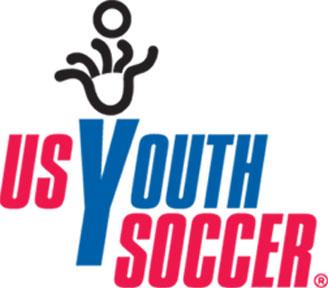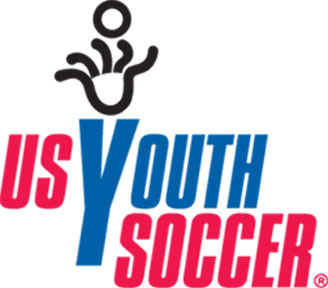
 Next year, the world of youth soccer will continue its evolution as all members of U.S. Soccer will begin to transition on two key factors to encourage further youth development. The first change will be the nationwide adoption of Small-Sided Games and the second will be a shift from school-year to calendar year for the age grouping of teams.
Next year, the world of youth soccer will continue its evolution as all members of U.S. Soccer will begin to transition on two key factors to encourage further youth development. The first change will be the nationwide adoption of Small-Sided Games and the second will be a shift from school-year to calendar year for the age grouping of teams.
"With these initiatives, we’re more likely to have players better prepared down the road," said Tab Ramos, U.S. Youth Technical Director and U-20 Men’s National Team head coach. "With small-sided standards, what we're trying to do is to help players develop by putting them in an environment where they are constantly involved in the play, and our changes in birth-year registration will make age groups easier to understand, while aligning our calendar with the international calendar."
US Youth Soccer, the largest member of U.S. Soccer, will assist members with information on these changes through the national office and our 55 member State Associations.
US Youth Soccer director of coaching education and long-time advocate of Small-Sided Games, Sam Snow acknowledged, “Since the mid 1980’s US Youth Soccer has been an advocate for Small-Sided Games. Why? The many benefits to the players and even to novice coaches are clear. With fewer players on the field making quick tactical decisions is easier. Players are in the vicinity of the ball more often which engages them in all four components of the game. The players are realistically exposed to the principles of play frequently. In short, Small-Sided Games will accelerate the development of American soccer players.”
Small-Sided Games: Small-Sided Games will be mandated come August of 2017, with specific changes occurring in regard to alterations to the field size, goals and rules. The result will be a decrease in 11-vs-11 competitions in lieu of more 9-vs-9 and 7-vs-7 competitions. U.S. Soccer will encourage the adoption of Small-Sided Games best practices in August of 2016. US Youth Soccer has been encouraging Small-Sided Games for more than 20 years and most of the 55 member State Associations have adopted the philosophy during that time.
The benefits of Small-Sided Games for players include more fun, more touches on the ball and more tactical decisions. The style of play will allow players to learn different positions, learn tactics quicker, increase fitness and allow players to be more emotionally and socially involved — creating a more fun and enjoyable game.
Small-Sided Games FAQ: [Download PDF]
Small-Sides Games USSF Standards Chart: [Download PDF]
"What we’re trying to do is to help players develop by putting them in an environment where they are constantly involved in the play," Ramos said. "That could be with the ball and that could be without the ball, but when you make things small-sided, everyone is somehow involved in the play, whether that’s in defending, in cutting angles, in cutting the ball back, you’re always in the play."
Calendar Year: Effective August 2017, the grouping of players will also change nationwide, with encouraged adoption of best practices in August of 2016. U.S. Soccer will go back to calendar birth years to align with international standards and Youth National Team programs.
US Youth Soccer will implement the best practice of calendar year age grouping for player registration beginning with the 2016-2017 soccer year for US Youth Soccer programs and competitions.
Using the school calendar for age groups is practiced only in the United States and Canada; as all other FIFA members go by the calendar year.
Previously, age groups were determined based on players born between Aug. 1 and July 31. The change to calendar year age groups will reflect the calendar year, or Jan. 1 to Dec. 31. Players are still allowed to “play up” or play in an older age group.
US Youth Soccer, a respected leader in player development for more than 40 years, has seen the evolution of the game and various changes. The US Youth Soccer Olympic Development Program has used the birth year for the grouping of players since it was established in 1977. In fact, the James P. McGuire Cup, the oldest trophy in youth sport, awarded at the annual US Youth Soccer National Championships also shows the history of teams named for their calendar year age group.
Calendar Year FAQ: [Download PDF]
Calendar Year Age Matrix 2016-2023 [Download PDF]
“Overall, the two things this accomplishes is it makes things easier and it gets us on the same calendar with the rest of the world," Ramos said. "So now it becomes easier to identify for U.S. National Teams and everything else when it comes to international soccer.”
Click here for U.S. Soccer's official statement on the changes.
More details will be provided as available regarding specific implementation for these mandates from U.S. Soccer.
About the United States Youth Soccer Association (US Youth Soccer) – US Youth Soccer - "The Game for ALL Kids!®" is the largest youth sports organization in the country and largest member of the United States Soccer Federation, the governing body of soccer in the United States. US Youth Soccer registers more than 3 million players annually, ages 5 to 19, and over 900,000 administrators, coaches and volunteers in 55 member State Associations. US Youth Soccer programs provide a fun, safe and healthy environment for players at every level of the game. For more information, visit www.USYouthSoccer.org.

There are no comments
Please login to post comments